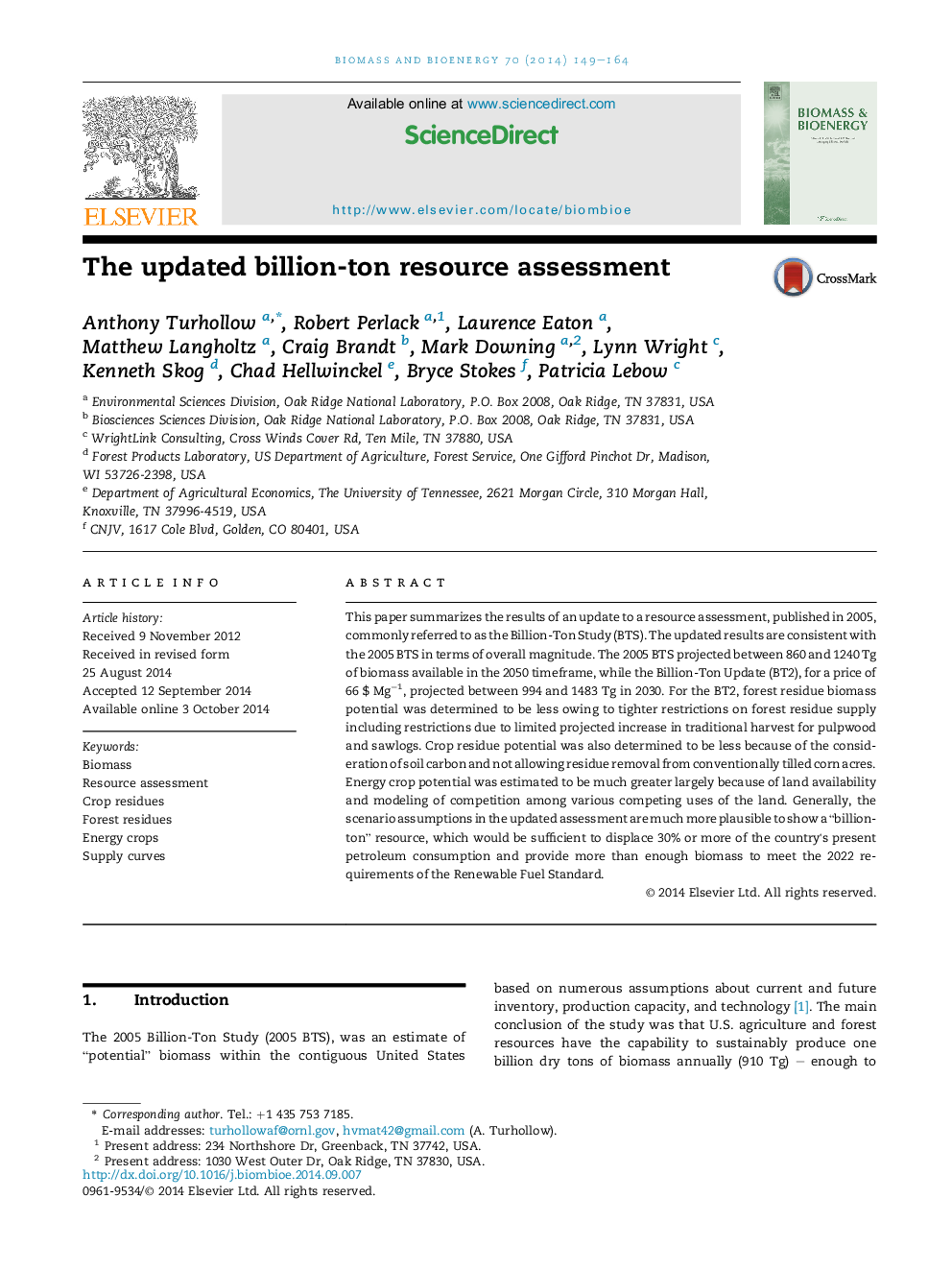| Article ID | Journal | Published Year | Pages | File Type |
|---|---|---|---|---|
| 7064158 | Biomass and Bioenergy | 2014 | 16 Pages |
Abstract
This paper summarizes the results of an update to a resource assessment, published in 2005, commonly referred to as the Billion-Ton Study (BTS). The updated results are consistent with the 2005 BTS in terms of overall magnitude. The 2005 BTS projected between 860 and 1240Â Tg of biomass available in the 2050 timeframe, while the Billion-Ton Update (BT2), for a price of 66Â $Â Mgâ1, projected between 994 and 1483Â Tg in 2030. For the BT2, forest residue biomass potential was determined to be less owing to tighter restrictions on forest residue supply including restrictions due to limited projected increase in traditional harvest for pulpwood and sawlogs. Crop residue potential was also determined to be less because of the consideration of soil carbon and not allowing residue removal from conventionally tilled corn acres. Energy crop potential was estimated to be much greater largely because of land availability and modeling of competition among various competing uses of the land. Generally, the scenario assumptions in the updated assessment are much more plausible to show a “billion-ton” resource, which would be sufficient to displace 30% or more of the country's present petroleum consumption and provide more than enough biomass to meet the 2022 requirements of the Renewable Fuel Standard.
Related Topics
Physical Sciences and Engineering
Chemical Engineering
Process Chemistry and Technology
Authors
Anthony Turhollow, Robert Perlack, Laurence Eaton, Matthew Langholtz, Craig Brandt, Mark Downing, Lynn Wright, Kenneth Skog, Chad Hellwinckel, Bryce Stokes, Patricia Lebow,
